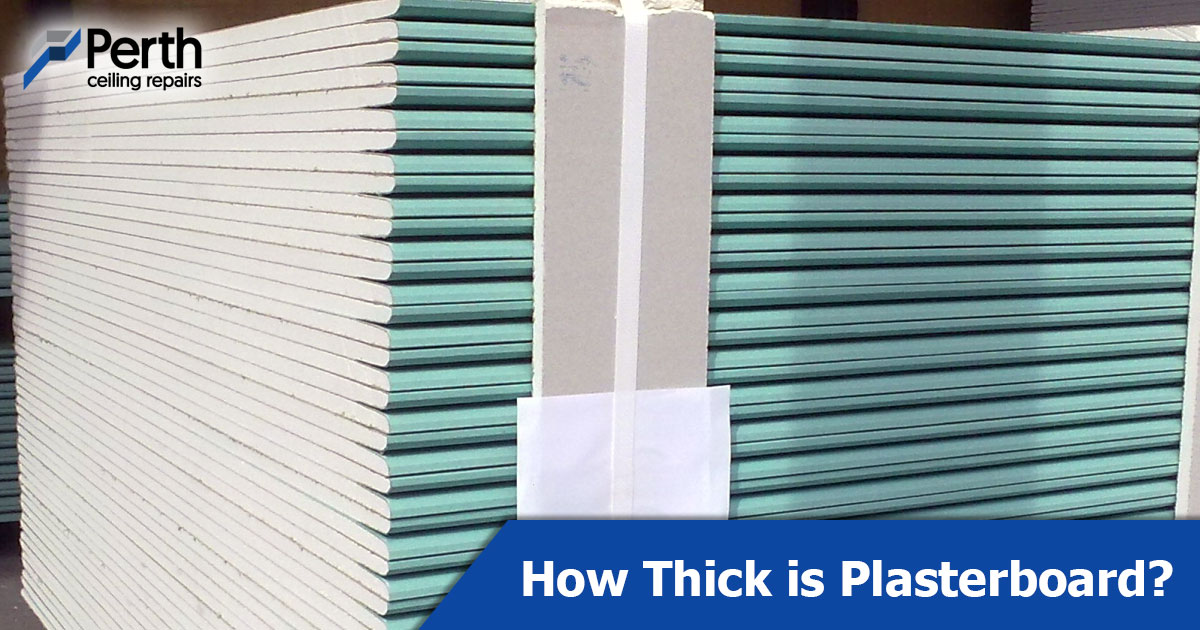
Plasterboard is also known as drywall. It is used a lot in building homes, especially for inside walls and ceilings. It’s made of a material called gypsum, which is put between two sheets of paper. Plasterboard can be made in different ways to resist fire, humidity, and noise. That’s why it’s a popular choice for inside walls.
It was first used in Australia in the 1940s. Today, it’s a common material used in many Australian homes. Depending on where you live, you might call plasterboard by other names, like drywall, gypsum board, or Gyprock. That’s why people sometimes get confused about the difference between plasterboard and Gyprock.
Plasterboard Thickness in Australia
Regular plasterboard is usually 10mm or 13mm thick. It can be between 900mm to 1400mm wide and between 2400mm to 6000mm long. These sizes work well with the standard spacing of wall studs, but the actual sizes can be different depending on who makes the plasterboard. The thickness of the plasterboard you use will depend on where you’re putting it.
Plasterboard Thickness for Ceilings
For ceilings, plasterboard is usually 9.5mm or 10mm thick in Australia. Some people think they need to use thicker plasterboard for ceilings, but that’s not true. Using thicker plasterboard can make it harder to seal the joints.
Plasterboard Thickness for Walls
For walls, plasterboard is usually 12.5mm or 13mm thick. It’s good for places where you don’t want a lot of noise, like bedrooms, nurseries, or home offices. If you’re replacing old boards that were 9.5cm thick, it’s best to use the same thickness to avoid problems.
Plasterboard Thickness for Commercial Projects
In commercial projects, the preference usually leans towards plasterboard with a thickness of 13mm. This option is especially popular in environments where noise reduction is crucial.
Offices, meeting rooms, and hotels commonly use this thickness. It is also prevalent in educational institutions and healthcare facilities where quiet environments enhance productivity and comfort.
The benefits of using a 13mm thick plasterboard go beyond its superior soundproofing capabilities. This thickness also adds an element of sturdiness to the walls. It ensures a more robust and durable surface that can better withstand the high-traffic nature of commercial settings.
Remember, however, that every project is unique. Consulting with professional ceiling contractors will ensure you choose the right plasterboard thickness for your specific needs.
Unlocking the Potential of Plasterboard
Plasterboard is easy to put up and it doesn’t cost a lot. Once the plasterboard is up, you can decorate it in different ways. You can paint it, put wallpaper on it, or even add tiles. Plasterboard is also good because it doesn’t catch fire easily and it’s not bad for the environment.
The thickness of your plasterboard is important. It affects how it works, whether it’s for walls or ceilings. Knowing about these differences can help you make the best choices. Because plasterboard is easy to use, affordable, and flexible, it’s a top choice for builders and homeowners alike.
In need of expert assistance with your plasterboard ceilings? Perth Ceiling Repairs is just a call away! Offering professional ceiling repair services, we ensure your ceilings are in their best shape. Choose us for a service that combines quality, efficiency, and competitive pricing.

